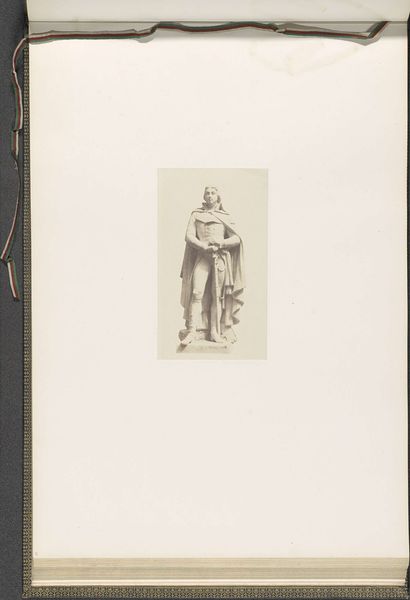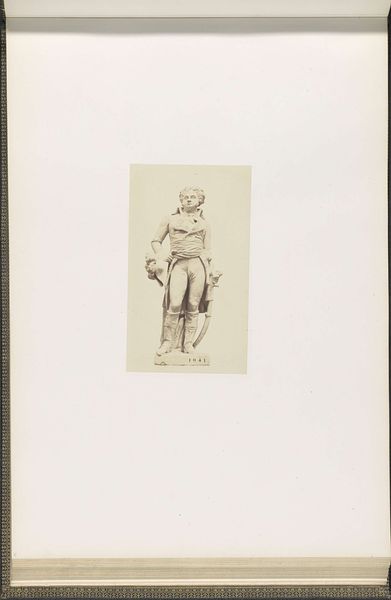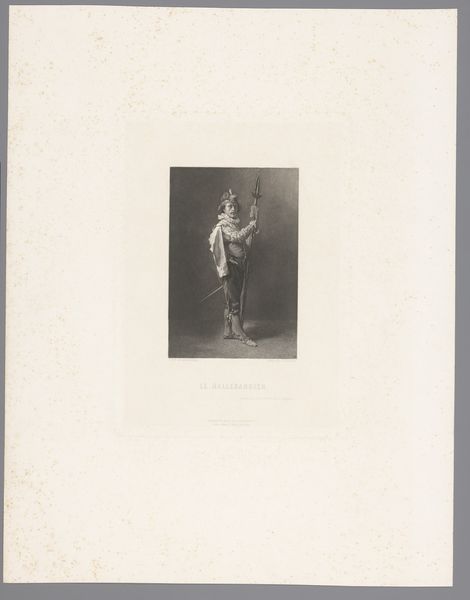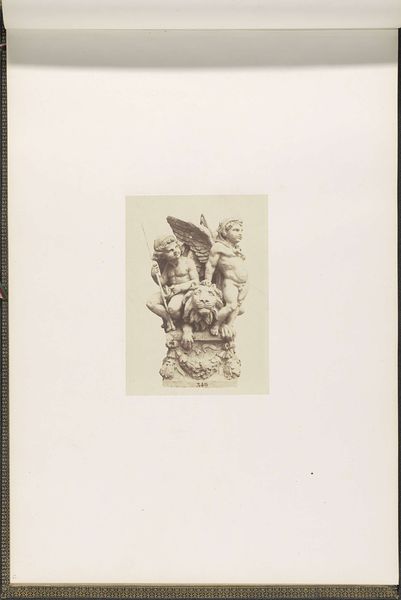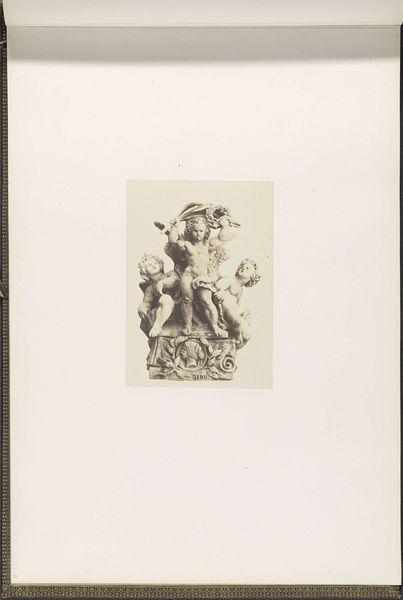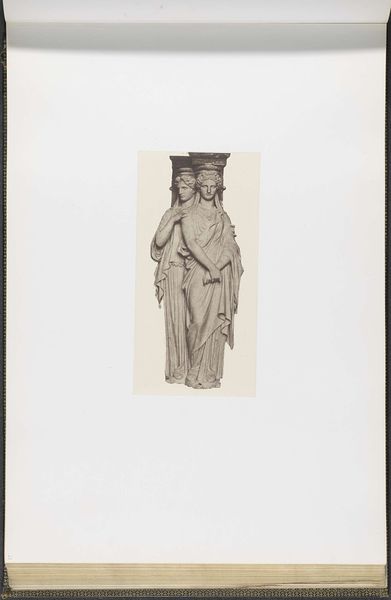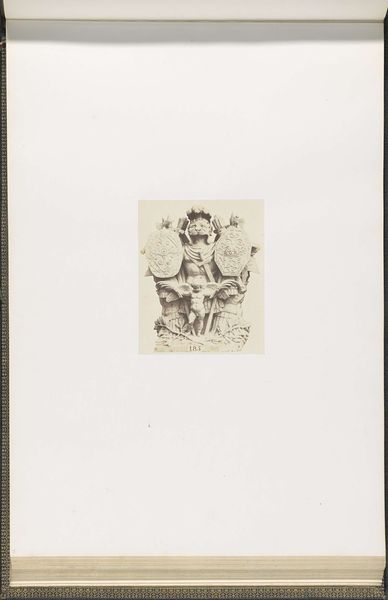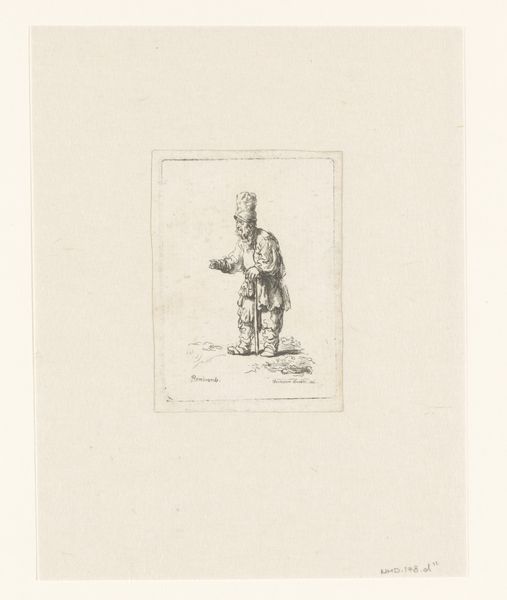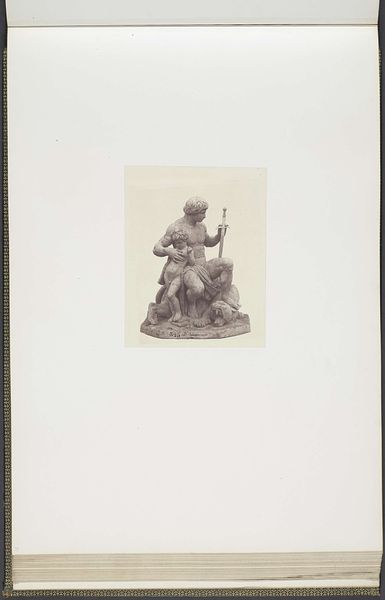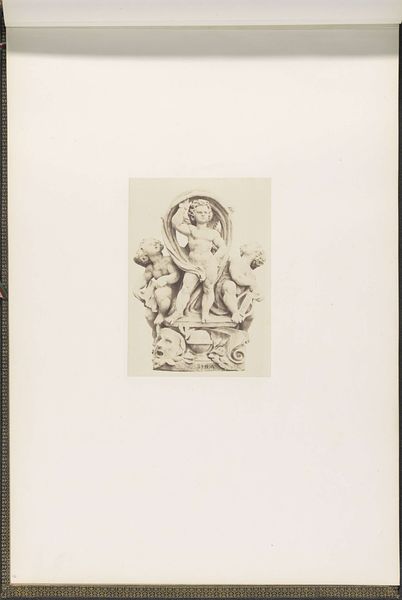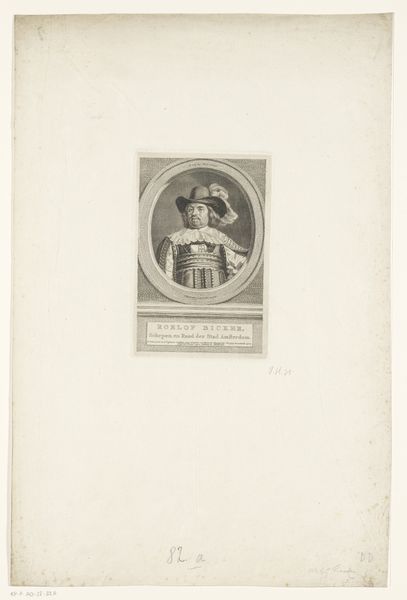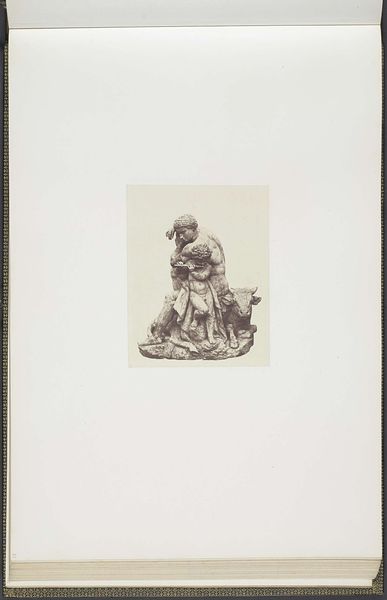
Gipsmodel voor beeldhouwwerk op het Palais du Louvre: "Masséna" door Célestin Anatole Calmels c. 1855 - 1857
0:00
0:00
print, photography, sculpture, gelatin-silver-print
#
portrait
#
neoclacissism
# print
#
photography
#
sculpture
#
gelatin-silver-print
#
history-painting
#
academic-art
Dimensions: height 376 mm, width 523 mm
Copyright: Rijks Museum: Open Domain
Editor: Here we have a photograph of a plaster model, "Masséna," by Célestin Anatole Calmels, dating from around 1855-1857. The sculpture looks imposing, and quite classical, but something about its isolation in the photo gives it a melancholy air. How do you read this image, with its layered history? Curator: I think that melancholy air comes precisely from understanding the complex narrative embedded here. Calmels’ sculpture, a paean to Marshal Masséna, exemplifies Neoclassical ideals valorizing military might. Yet, the photograph, especially devoid of context as it is, allows us to question whose stories are monumentalized and at what cost. Editor: So you're saying the photograph pulls back the curtain a bit? Curator: Precisely! Think about who Masséna was: a figure complicit in Napoleonic expansion, empire-building through violent means. This photo, stripped of its intended celebratory context, invites us to confront the ethics of immortalizing figures tied to colonialism and war. What does it mean to glorify such individuals, especially when those actions have devastating consequences for marginalized populations? Editor: That’s a good point. I hadn’t really considered it beyond the aesthetic, but situating it within that historical and political context really does change the reading of the image. It's more than just a portrait; it's a statement, or at least, it was meant to be. Curator: Exactly! By interrogating the ideologies embedded within artworks like this photograph of Calmels’ sculpture, we can foster a more critical understanding of history and power. And that’s how art becomes a tool for social change. Editor: I’m starting to see how images carry so much more weight than what initially meets the eye. Thanks for sharing your insight! Curator: My pleasure. It’s a dialogue, and each perspective adds depth to our understanding.
Comments
No comments
Be the first to comment and join the conversation on the ultimate creative platform.
